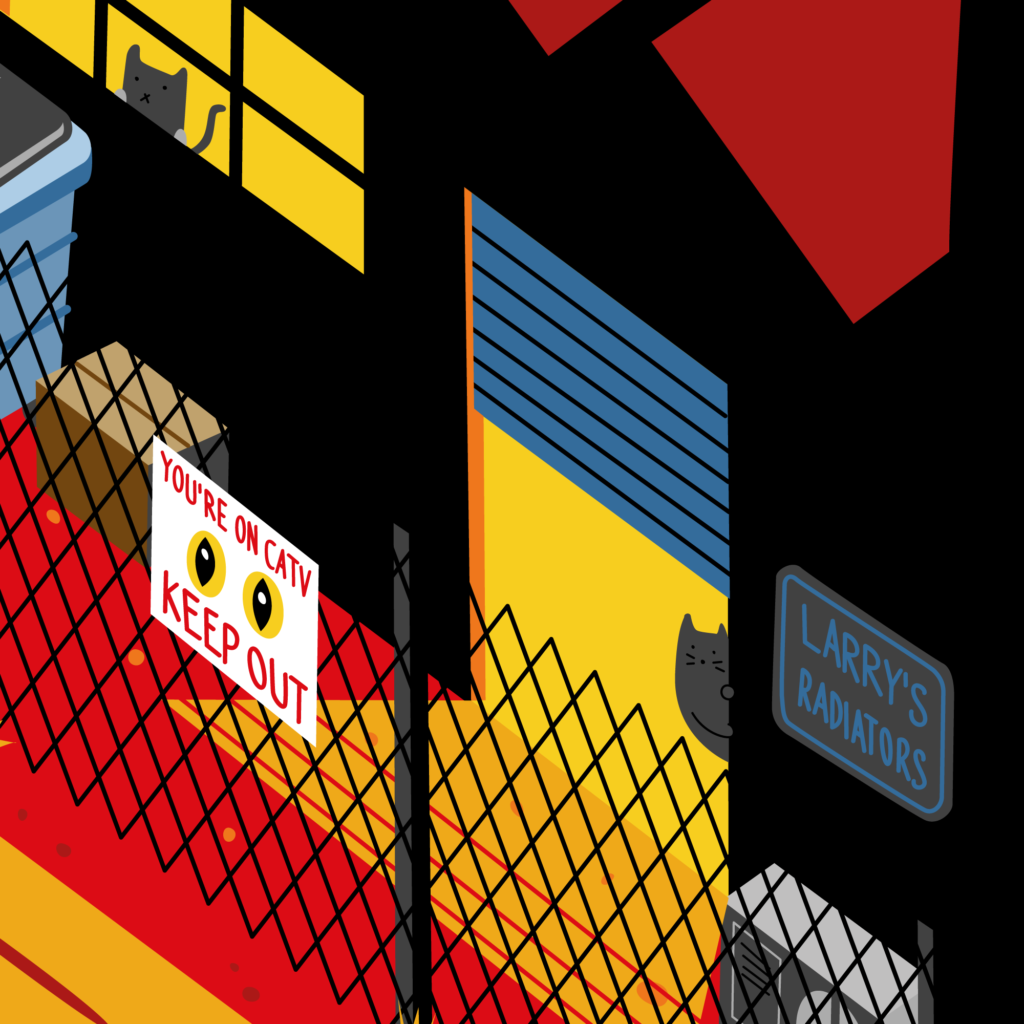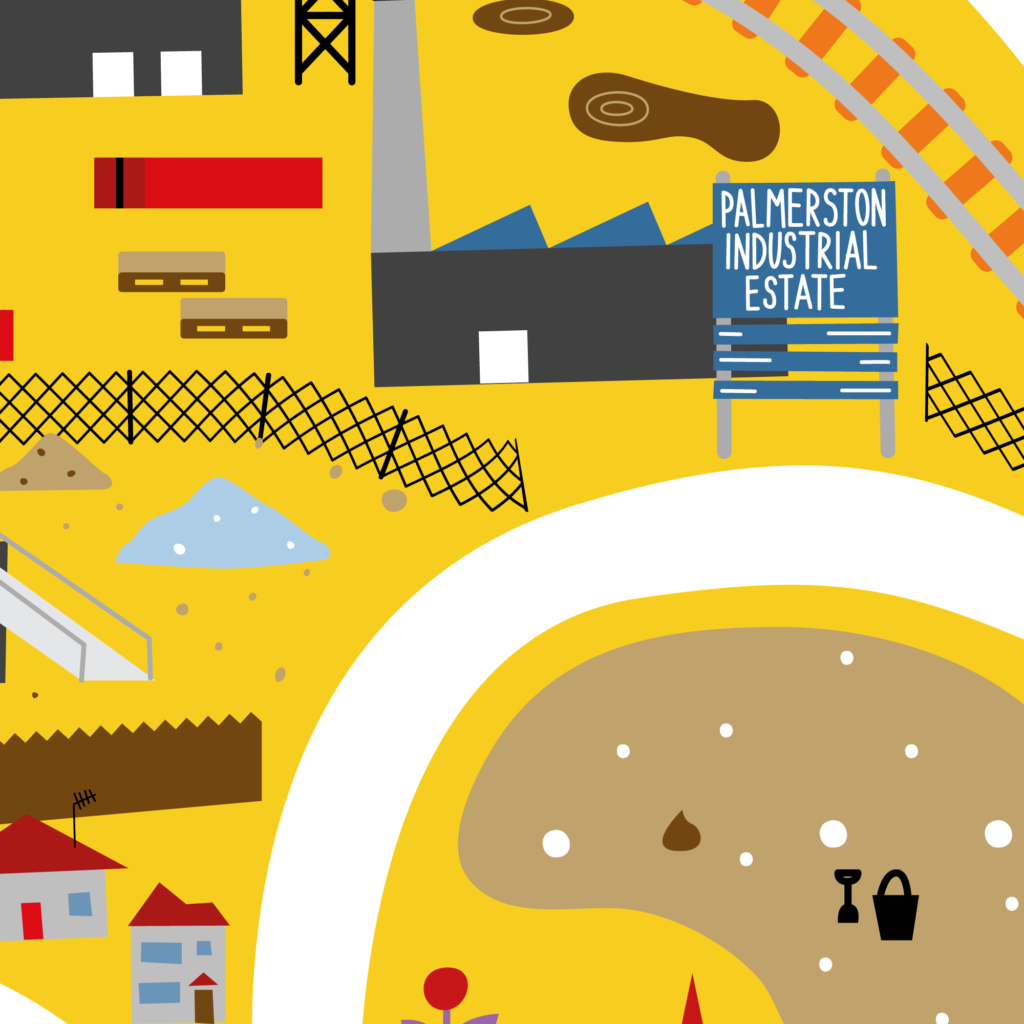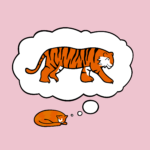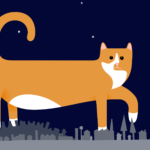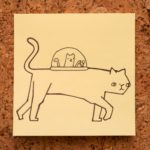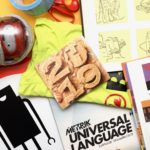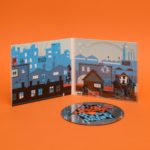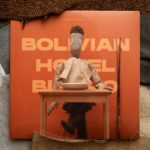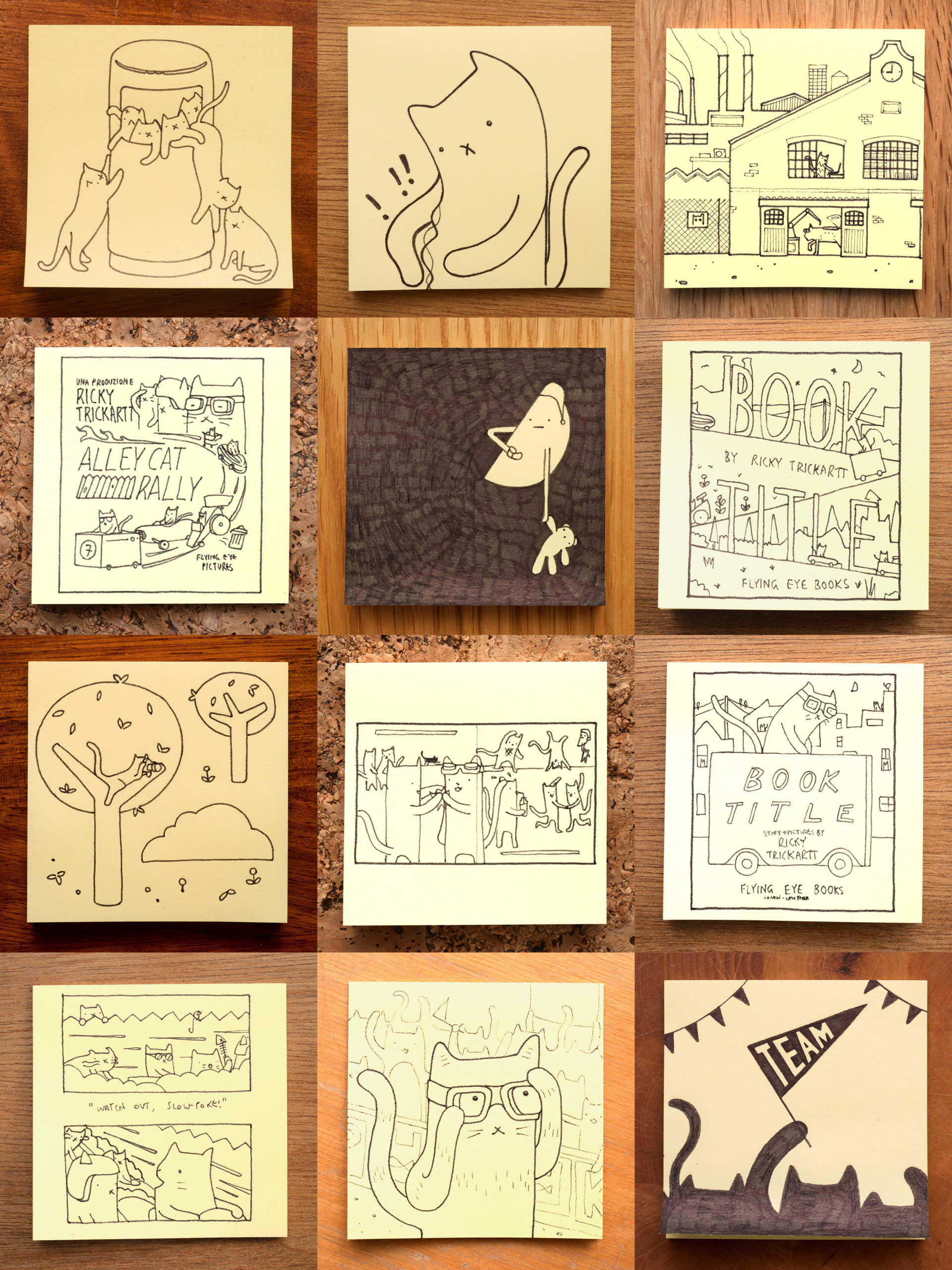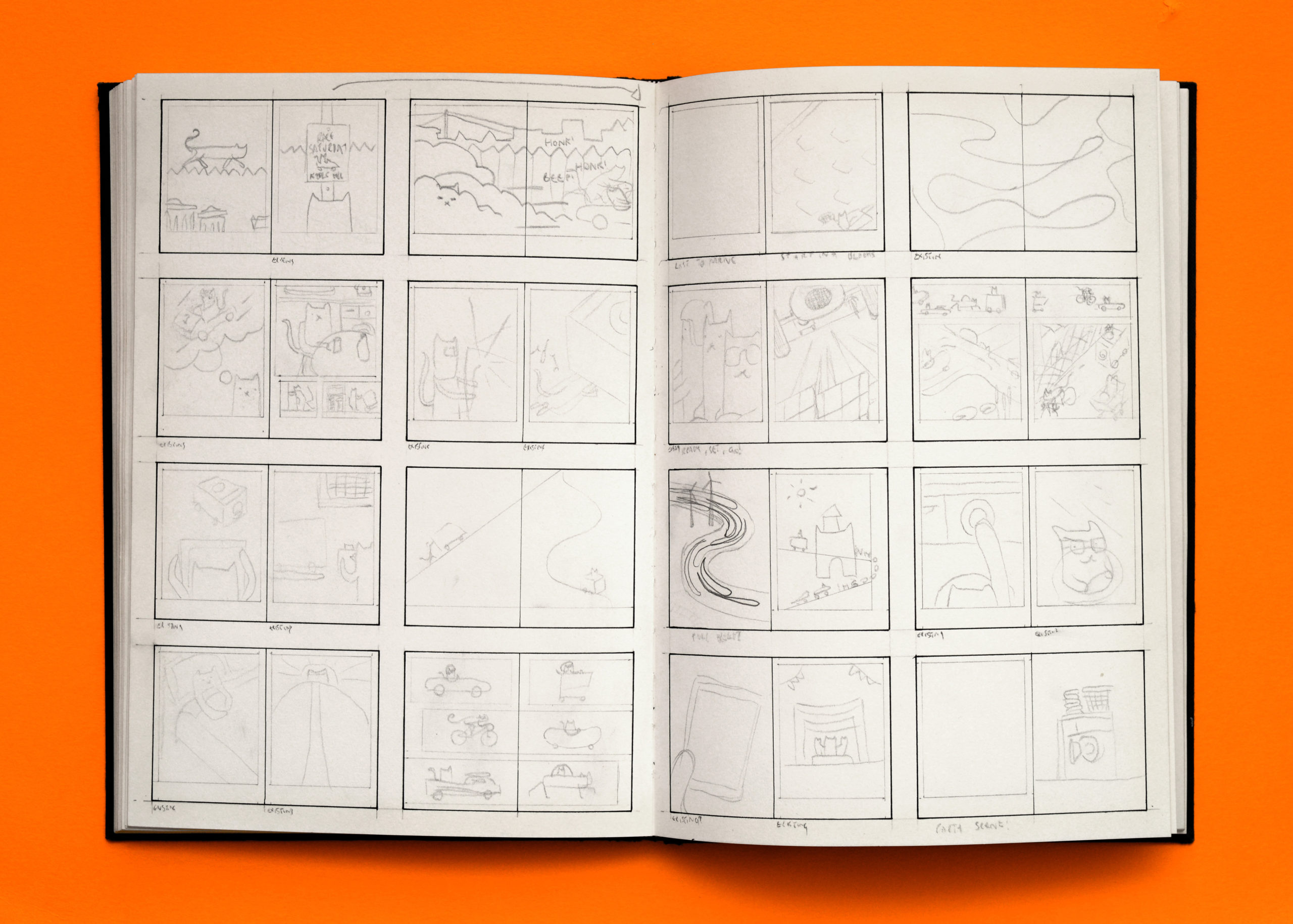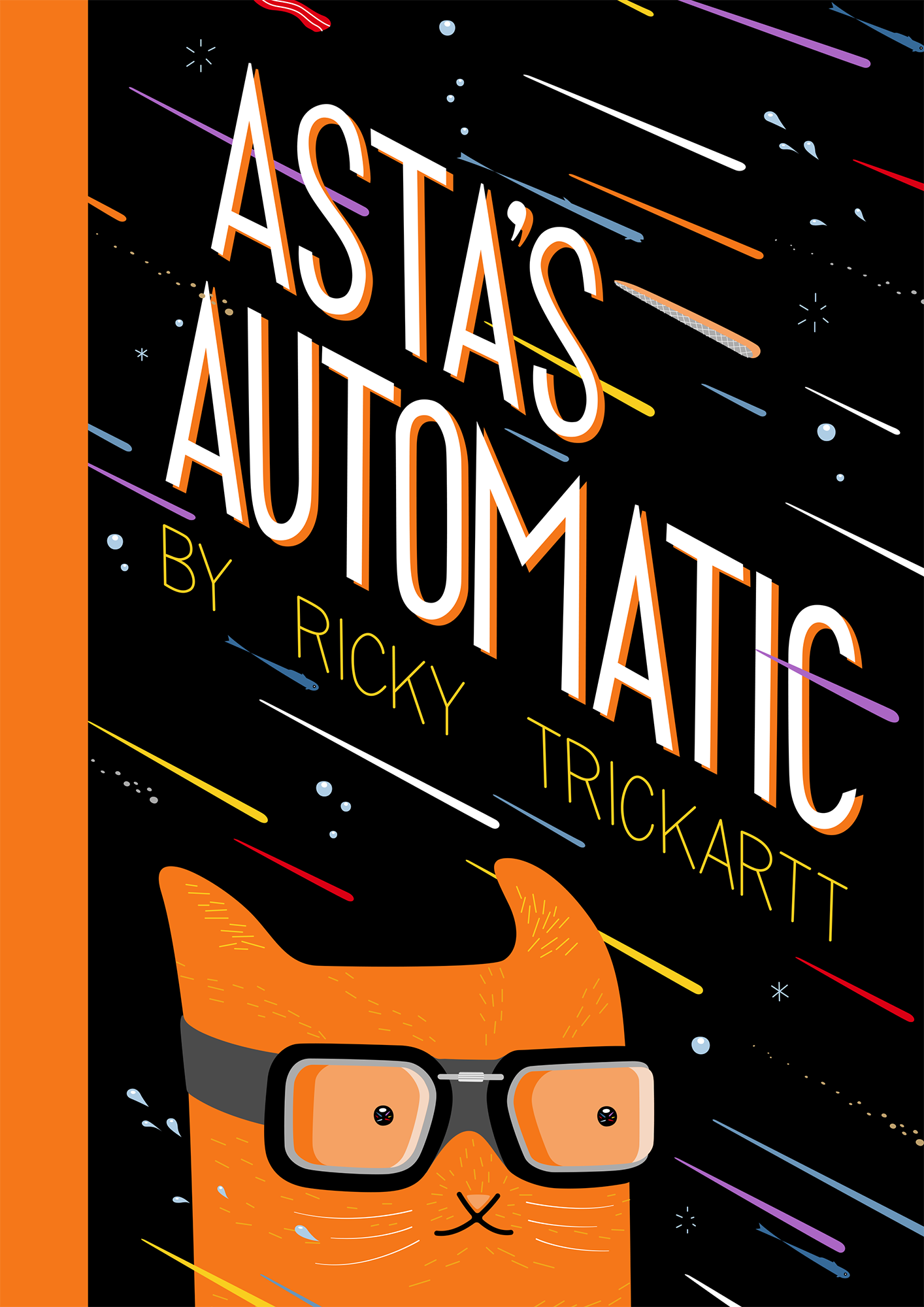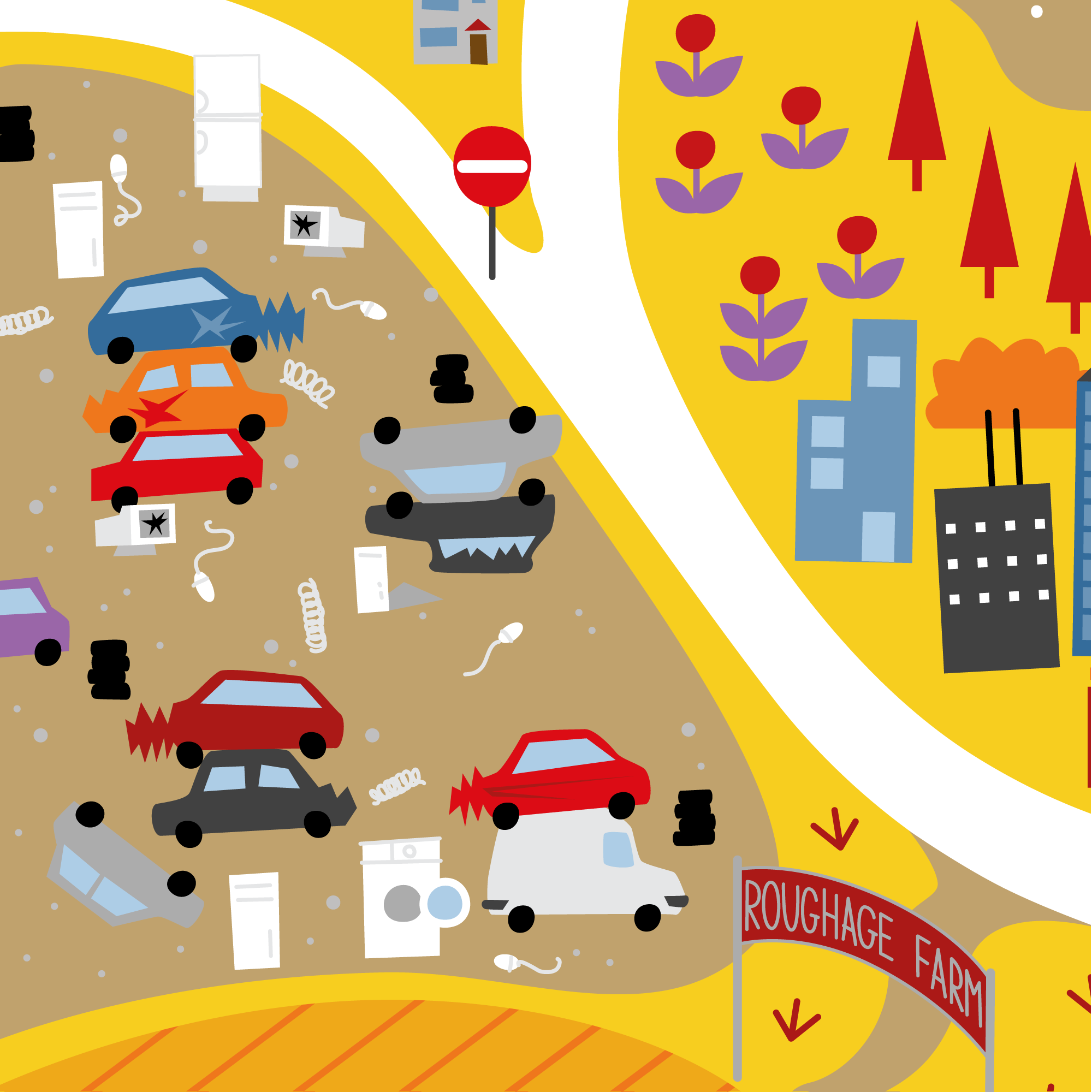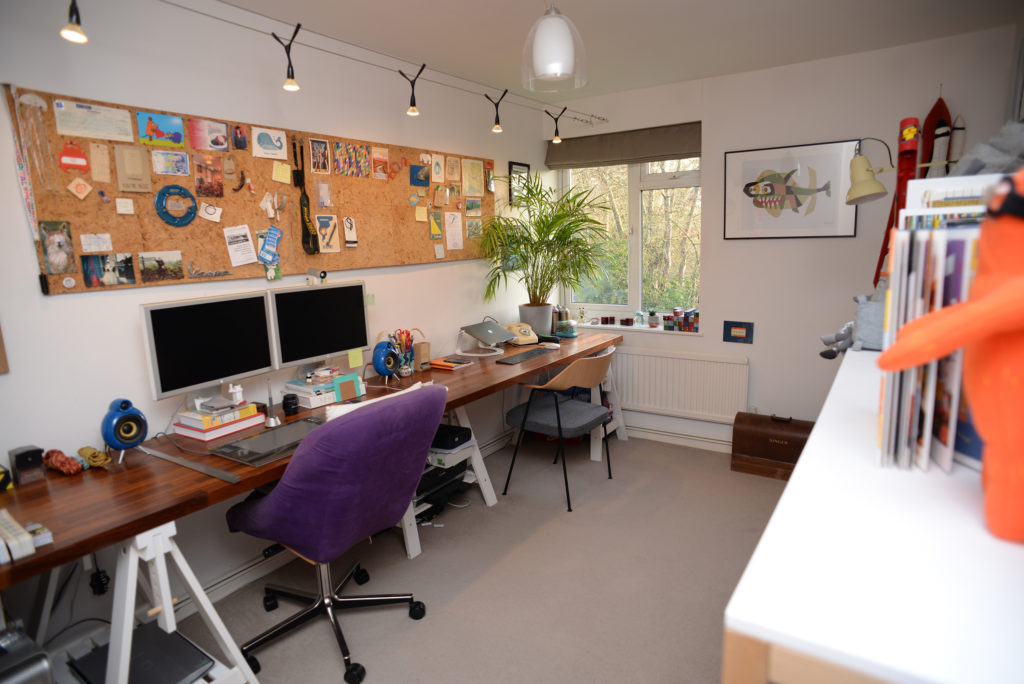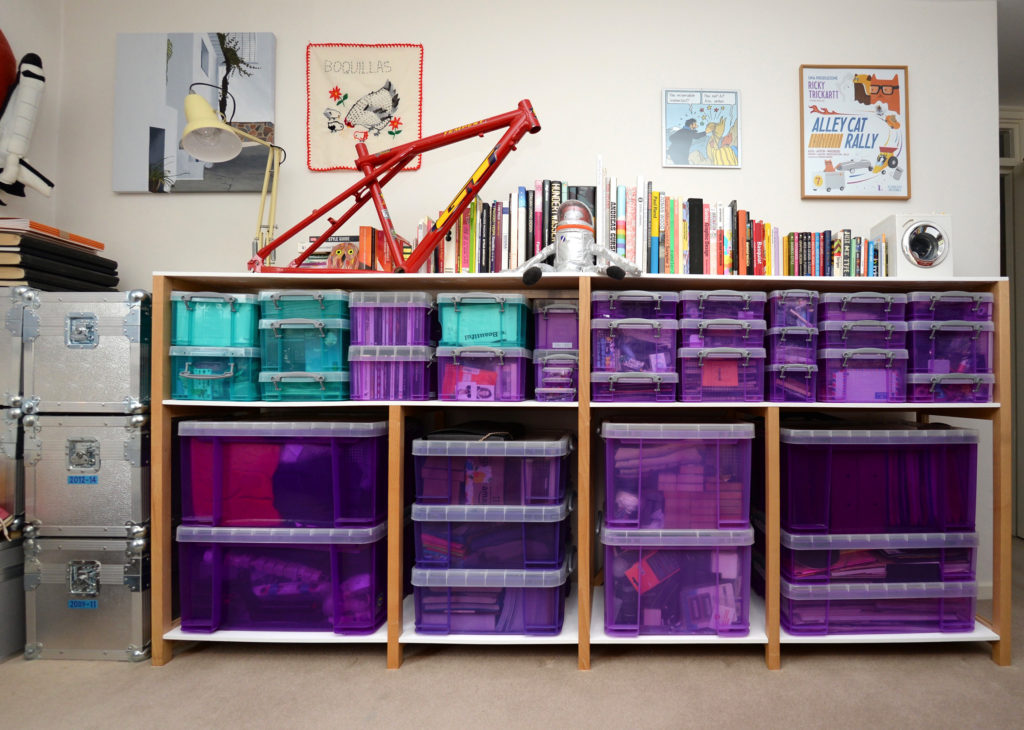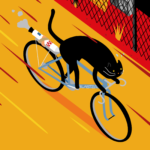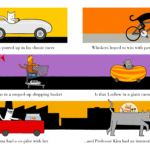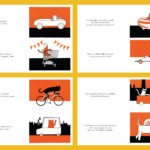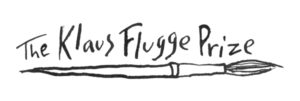
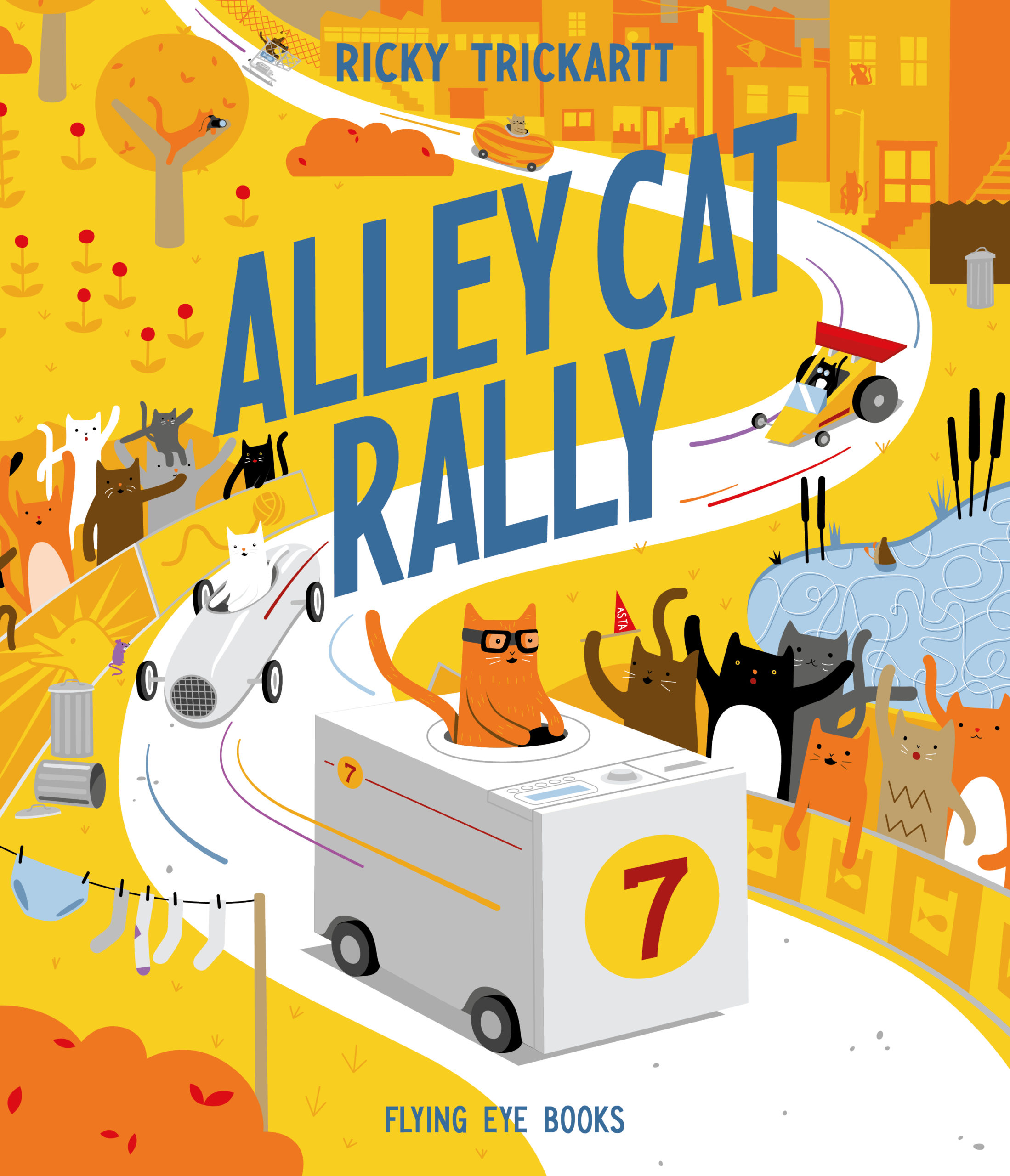
Alley Cat Rally, by Ricky Trickartt
Alley Cat Rally by Ricky Trickartt is one of the six books on the shortlist for the 2022 Klaus Flugge Prize.
The judges loved the fizz and fun of rally cat driver Asta’s world and the clever details Ricky includes.
Former Klaus Flugge Prize judge, Senior Lecturer in Education: Primary English and Children's Literature, Mat Tobin interviewed Ricky about his book.
Mat: On your website, Alley Cat Rally is described as ‘a story about a cat who makes a racing car out of a washing machine, but it’s also really about the joy of making things, girls pursuing STEM projects, and the power of diverse ideas.’ This pursuit of diverse ideas is something that seems to echo your own career (I love the breadth and range of your work in design). Can you talk us through some of the key challenges that creating a picturebook brought?
Ricky: Firstly, thank you and all the other judges for being so kind as to even consider my book!
Well, the biggest challenge was that I had no idea what I was doing! I’ve never had any formal education or even basic guidance on making something like a picture book. In the rest of my work I may have to create a small handful of pieces of artwork for a single project, but I’ve never had to make anything with a linear narrative, so that was the biggest challenge for me. I started out with my idea - a cat driving a washing machine - and tried to flesh out the story behind it. How did she come to be driving the washer? What happened when she drove it? Does this make a beginning, middle and end? This was all new stuff to me!
Mat: I love the humour and playfulness of Alley Cat Rally from the clever wordplay ‘Take Your Litter Home with You’ to the use of the endpapers inviting the readers to explore throughout. How important was it that the humour was there in the background as well as the foreground?
Ricky: I think the only way I’ve managed to scoot through my career so far as a graphic artist has been to never take anything too seriously. So even though the book has a message of positive reinforcement - see where your ideas can take you, whoever you are - first and foremost, it had to be fun. And I guess to me, fun is silly. I owe credit for the quantity of the silly details to Sam at Flying Eye. I sent a little collection of my post-it drawings I called ‘scratch-and-groan’ - where you had to guess what the pun in the drawing was, then there was a panel of scratchcard material you had to scratch off to reveal the answer. This got Sam to look at my portfolio and ask what my children’s book was about, and to encourage me to develop what became Alley Cat Rally. I feel like Sam recognised that Kibble Hill is a world unto itself in my mind, and that I should put it on the page, rather than just assume that everyone else would imagine it too. ‘Add more details!’, he told me. ‘Put in easter eggs everywhere, like your post-it note drawings with their puns!’. That was effectively permission to me, so I added details until I started worrying that they wouldn’t show up in print!
Mat: It’s safe to say that the cast of Alley Cat Rally is cat-tastic. I know that each one has a backstory. In what ways did this help you with the narrative? Can you talk us through one of your favourites from initial sketches to completed design (and race-car/bike/robotic cat)?
Ricky: I say I had no idea what I was doing making this book, but that’s not to say I knew what I was doing by the time the book was finished! I didn’t even make a character sheet until just before the print deadline, and the reason I did it then is because the final editorial passes at Flying Eye were spotting continuity errors with things like the Alley Cats’ fur highlights and whiskers. So the Alley Cats just were who they were - it sounds completely wishy-washy, but it’s almost like I let them tell me what their personalities were! Getting the ideas for them could be a pretty esoteric, meandering process though. One of the cats I grew up with - Maurice - was a big ginger cat. I always imagined his theme song was ‘Cool Jerk’ by The Capitols - his heft was more of a baggy, furry illusion, but the way he carried himself around my suburban streets, stopping in at smitten neighbours’ houses for extra courses of dinner before he actually came home to us, gave me the impression that his biggest aspiration in life was to become the heaviest cat you ever did see. This doesn’t go where you think it does - he didn’t become Ludlow! The upshot is that I used to make my mum Mother’s Day cards featuring illustrations of Maurice aspiring to be an even bigger cat than he was - dreaming of being the tiger he thought he had inside him, barrelling through the city Godzilla-like, and then one idea was, well if he couldn’t grow himself to be tiger-sized, then maybe he could have like a robotic tiger he could drive around and feel big in. It wasn’t really right for Maurice - he was much more brawn than brains - but that mini-idea was what eventually became Professor Kim in the book, as it would require a cat a whole lot smarter than Maurice or me, to make a robotic tiger to prowl around in!
Mat: One of the most striking aspects of Alley Cat Rally, for me, is the strong sense of line, design and colour; I particularly loved the play on perspective throughout and the typography within the pictures. Can you think of aspects of your prior work in media and design that informed your work within the picturebook?
Ricky: It’s kind of strange, but from my current perspective, I feel like working on Alley Cat Rally has influenced my day-job work more than the other way around. I love my work designing record covers, as every job is completely different. I may have one job on the go where the musician says ‘I want exactly this image on the cover and I have a whole manifesto for what my album is about’, and another where the artist doesn’t even have a strong feeling about what the album should be called, let alone its artwork. And either could be a bad or a good situation. But working on my children’s book has renewed my will to sometimes go on a flight of fancy imagination when there isn’t a clear direction from the project.
This can be quite obvious - like when the pandemic hit and closed all the nightclubs, I did a packaging design for a ‘House Party’ album. Inspired by all the cityscapes I had been drawing of Kibble Hill, the inside became a view of what the town would look like if everyone was in their bedrooms raving alone, because the clubs were all closed.
Or the impact can be a bit more abstract - for a recent album project, I was asked to create some artwork that felt expressionless and disaffected, which was a real challenge to someone as silly as I am. I ended up creating a character for the album project, sewing a model to be used in all parts of the album, treating him almost like I did one of the characters from my book.
Mat: You made a lovely ‘Making of’ video for Alley Cat Rally and I thought it was brilliant that ‘washing machines were a thing’ for you. Anyone who wants to see the origin of the picturebook should head over and watch it here. Would it possible for you to share some of your sketchbook work and talk us through some key moments for you in which the idea started to come together?
Ricky: I don’t really intend to beat the drum (uh, pun not intended), but I think washing machines are really under-appreciated! They are basically robots that have saved an unfathomable amount of human-hours in their surprisingly short existence, and they’re worth a bit more positive thought than they tend to be given!
As much as I protest that I don’t know what I’m doing making a children’s book, I guess the one part I had confidence in was my ability to express the story visually - I just needed the story. So my sketchbook work is all storyboards. While I had scrawls for the text on my first version, I guess I tried to tell the story visually first, then worried about the words later. My next storyboard was just vague pencil lines - by that point I had already seen it in my originally-envisioned black and orange, so I wasn’t so enthused to sketch it in colour again. After that, the storyboards all moved into the computer, and they weren’t even very illustrated - it was much more ‘do I know what is meant to be happening on this page? Do I have an idea for how to express that visually? Do I have a sketch for that? Do I have final-quality artwork for it?
And of course, there have been many post-it note drawings (I do at least one a day) that became ideas in Alley Cat Rally.
Mat: In the video, you also mention the feedback you received from Flying Eye. Eventually, the book would be published by them. Can you give us a little insight into working with Emma Ball and Ivanna Khomyak (or others) and how they helped shape and hone your story? Were any big changes made and what did you learn from that experience?
Ricky: It was a team effort from lots of people at Flying Eye to make Alley Cat Rally into the book it was. I mentioned Sam above, who not only took the second look at the idea, but also encouraged me to develop the illustrations, both in terms of colour and detail. A couple of years before Sam’s input was Harriet, who was kind enough to give me feedback on the first version I sent to their submissions inbox. Part of her feedback could be simplified to ‘it’s a race, make it more exciting!’, which sounds kind of obvious in hindsight. It wasn’t so obvious to me at the time - I guess because of the sort of person that I am, the part of the story that I thought was interesting was Asta coming up with the idea and making her machine. I felt like I knew almost nothing of racing! Short of playing a few video games here and there, the only other race I had as a frame of reference was the Tour de France, as my significant other likes to follow it. It’s a completely mad, difficult to understand, slow-evolving race, but it definitely ended up having its influence on Alley Cat Rally.
After Sam agreed to publish the book, there was a window of several months - maybe even a year - before Flying Eye was ready to work on it. I had reworked about a half dozen of the illustrations with Sam already, but in the interim I got worried that because my artwork style can be so, er, unfocussed, it’d end up looking really obvious which pages were done a year apart. So I didn’t let the metaphorical pot off the bubble, and gradually reworked the rest of it too, before Emily was introduced as my editor.
I have no idea how publishing a picture book is meant to go, but I feel like I gave Emily an unrewarding time with my book, because she took on the editorship right when I was like ‘it’s done now!’. So she probably had to battle with me at my most stubborn to get the book finished. She ended up help round out the story though, and was also in charge of making me rethink the title and cover of the book.
Ivanna was the last contributor to the book, and a bit like Emily, she probably got the worst of me too, as I had already designed the whole book myself by the time she was working on it, and she had to put up with me being all ‘I’m a designer myself, I know what I’m doing’, in response to her feedback. But she was excellent, because she patiently gave me the detail and justification I needed to help me understand why they were more important considerations than what I came up with myself. She played quite an editorial role in her design input!
Mat: Can I be cheeky and ask for a tour of your workspace? It’d be great to see some of the materials that you work with or spaces that are important to you.
Ricky: I wish I could do a better job of a workspace tour, but I’ve recently moved house, and while I’ve managed to get my desk and pinboard set up, the rest of the room is still piles of unopened boxes, and artwork that is waiting for me to repair and repaint walls to be re-hung. So we’ll settle for a couple of images from how it was, which I guess is OK because that was where I made Alley Cat Rally.
Ironically it’s not in these photos, but the most interesting thing in this workspace is my fridge. I have a video Me and My Fridge I made about it many years ago. My mum renovated the kitchen in our home in 1999/2000, in this crazy, modern style, stainless steel and granite. Rather than getting a new fridge for the newly-fitted-out kitchen, she commissioned me, 13 years old and finally getting on with my art teacher at school (definitely not always the case!), to repaint the front of our existing fridge like an Andy Warhol soup can. Eventually my parents separated and the family house was sold, but we couldn’t bear to either leave the fridge behind or throw it out. So my dad helped me decommission the cooling system (leaving the interior lights working!), and for a couple of years when I was a teenager it was my wardrobe, before eventually becoming my art supply store.
There is all kinds of nonsense in there, including the art supplies my brother gave me after he completed his BA in Fine Art, ribbons and string, all kinds of paint, and even old Vespa parts I thought were far too interesting to throw away.
On the other side of the office from my desk I had a mega shelving system I designed, full of surpringly-well-organised containers - boxes for sketchbooks, letterpressing equipment, fabric bins, camera equipment, computer parts, albums I’ve designed etc. Along the top are my sporadic collection of art books, the frame from my teenage bicycle (GT’s ‘triple triangle’ design is a classic… so sculptural!), and of course, the little washing machine I converted to notify me whenever someone visited the bookshop page to order a copy of Alley Cat Rally.
Beyond that, my office remains littered with the kind of rubbish I find interesting, like a sample of raw tungsten, one of the densest metals around, a chocolate wrapper with a lovely design that I picked up in Edinburgh, or the ridiculous calculator-come-synthesiser that Casio made in the 1980s.
Mat: I am always fascinated by seeing an illustrator talk us through the process of bringing a page in their book to life. One of my favourite spreads is all the cats getting ready to start the race (the page with the words ‘The racers all lined up..’) Can you talk us through this spread and guide us through it from the initial sketch and layout to the finished piece?
Ricky: This was kind of a crucial part of the development of the book that happened before I even picked up a pencil. I had been thinking to myself ‘OK, if she is racing, who is she racing against?’. In my amateurish way, my first version of this spread when I did get drawing was originally strung out across eight pages!
Asta’s washer was pretty weird, so she needed to be racing against a field she actually had a chance against. Even with her secret weapon, I don’t think she would’ve fared well against a field that was all sports cars, so I began thinking up the other machines, and that’s kind of what dictated the cats’ personalities.
There was another cat in my first version of the story, who didn’t make it through - for a while he was called Pallina, and he was in kind of a home-made Popemobile (which in itself is an objectively funny vehicle). He had a sub-plot in which he was too busy ‘lapping up’ the attention of the crowds at the starting grid, that he never even crossed the line to start racing, but that proved to be too complicated to cram into the final book.
Some of Pallina’s vanity was folded into Anton’s personality. One of my old neighbours had a white cat that was just such a flirt and floozy with whoever walked past their alley, and was a big inspiration for Anton. If Asta was going to be an underdog, though, you needed someone to be the favourite to win, and that was Anton, in his very glossy, fancy racing car and all the confidence in the world.
Whiskers went through a late change during the editorial process. For me, I thought it was funny that he would be so confident in himself that he reckoned he could win in a race against motorised machines using only a bicycle - but Flying Eye thought it wasn’t really fair competition. So I added the rocket booster, which eventually failed a few pages later, anyway!
Unlike the girls and ungendered cats in the story, all of the boys were meant to be a little overconfident, and laughed at for it. I’d really like it if my book subtly makes some people see how many men are all confidence and no substance, and that if you look past that, maybe you’ll see some better ideas from the people who aren’t shouting - women and people of different social backgrounds.
Mat: Are there any contemporary artists/illustrators whose work you admire so much that you think everyone should encounter them? I’m a stubborn fool who doesn’t help himself, because I generally try to keep more than one foot out of design and illustration circles. This makes me feel a little bit metaphysically better about myself - in that I will rarely feel like I’m creating work that is just lazily following trends created by other people. It also serves to reduce the Instagram-esque experience of inadequacy, comparing myself to people who are parading when they are way more talented and successful than I am. This is also the worst idea in the world though, because it means I have a network of zero people to support or encourage me, and that it’s hard for me to pick up new jobs because from the outside, I must appear unpredictable and un-vouched-for.
Ricky: It doesn’t really answer your question, but it’s worth shouting out a couple of my fellow Klaus Flugge Prize shortlistees here - Adam Beer has been super friendly and welcoming to me as an outsider, and I’ve been loving the dog illustrations he’s been putting on his Instagram recently. Also, I haven’t managed to have much of a conversation with her, but Roozeboos’ illustration is an absolute delight and her book would be my pick to win the prize. Her artwork in Choices is so expressive, without being heavy.
Mat: Can you share a little with us about the stories you’re currently working on and what we can look forward to reading in the future?
Ricky: I wish I could share more… In case it wasn’t already obvious from the rest of this interview, my self-confidence often balances on a knife-edge. So while I feel like I’m drowning in ideas - both for more stories about Asta and the Alley Cats, and for completely new ideas for picture books (like ideas about space junk or dog-biscuit heists)- I find it hard to motivate myself to realise them, worrying that nobody will bother looking at them, or help me make them make sense. But that’s what has made being shortlisted for the Klaus Flugge Prize such a gift - it’s a massive motivator to see that, people do appreciate my efforts, and actually want to see what I do next. So I guess I should stop worrying about my unpainted walls and try and get some more pitches out there!
Alley Cat Rally is published by Flying Eye Books, 978-1838740306, £12.99 hbk
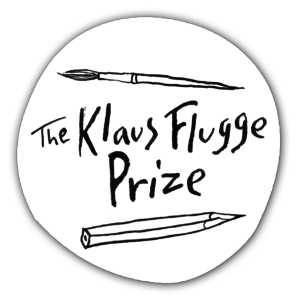
The Klaus Flugge Prize is funded personally by Klaus Flugge and run independently of Andersen Press.
Website maintenance & Copyright © 2024 Andersen Press. All Rights Reserved. Privacy & Cookie Policy.
